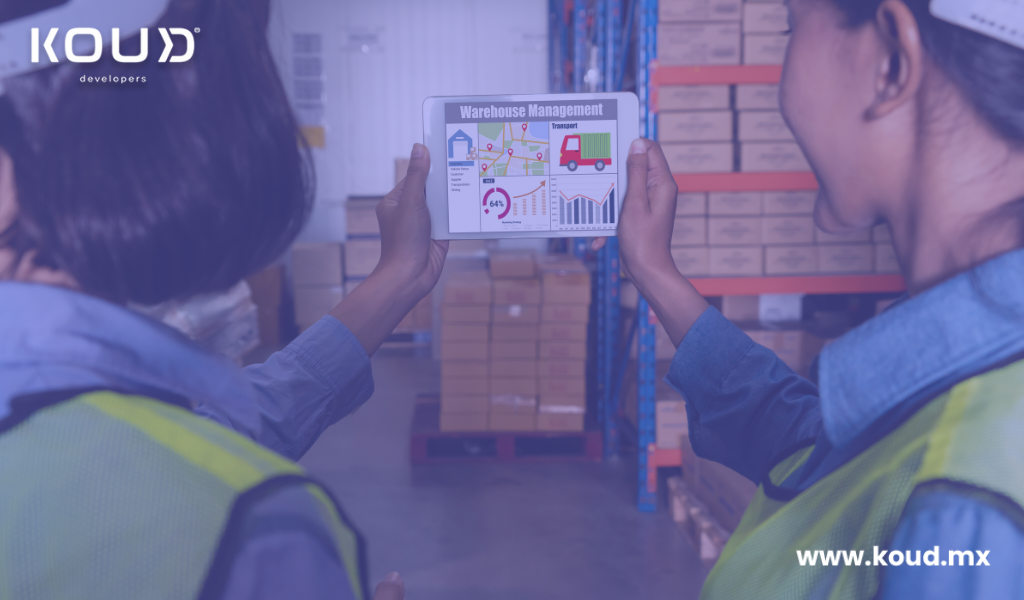Common Challenges in Implementing Logistics Software and How to Overcome Them
The implementation of logistics software can radically transform a company’s operations, optimizing fleet, inventory, routing, and delivery management. However, this process is not without its challenges. Companies attempting to implement logistics software often face issues such as lack of integration with existing systems, resistance to change from staff, and difficulties in adapting to new technologies. Overcoming these challenges is key to ensuring that the logistics software delivers the expected benefits, such as operational efficiency and cost reduction.
In this article, we will explore the most common challenges in implementing logistics software and provide effective solutions to overcome them, ensuring a successful transition to a digitized and efficient logistics system.
1. Resistance to Change from Staff
One of the most common challenges in implementing any new technology is employee resistance to change. In the logistics sector, where many workers have been using manual processes or outdated systems for years, the introduction of new software can cause concern, stress, and resistance.
How to Overcome Resistance to Change:
- Adequate Training: Ensure that employees receive the necessary training to understand and use the new software. Practical training sessions can help reduce anxiety about using new technological tools.
- Clear Communication: Explain the benefits that the software will bring to both the company and their own work, such as reducing repetitive tasks and improving efficiency.
- Active Participation: Involve employees in the implementation process from the start, soliciting their feedback and making adjustments as needed. This can increase acceptance and reduce resistance.
2. Lack of Integration with Existing Systems
Another major challenge is the lack of integration between the new logistics software and existing systems. Companies often have ERP, WMS, TMS platforms and other tools that need to connect seamlessly. Lack of integration can lead to data silos, task duplication, and operational inefficiencies.
Solutions to Improve Integration:
- Careful Software Selection: When choosing logistics software, make sure it offers strong integration capabilities with existing platforms. Solutions based on open APIs are ideal for easy integration.
- Technical Consultancy: Hire consultants specialized in software integration to ensure all platforms work together smoothly.
- Integration Testing: Before rolling out the software company-wide, perform integration tests in a controlled environment to ensure systems work coherently.
3. Hidden Costs and Budget Overruns
The cost of implementing logistics software can be significant, especially for advanced solutions such as ERP, WMS, or TMS systems. Without proper planning, companies may encounter hidden costs during implementation, such as hardware upgrades, additional personnel costs, software customization, and ongoing maintenance.
How to Control Costs:
- Detailed Financial Planning: Conduct a thorough analysis of implementation costs, including licenses, necessary hardware, software customization, and staff training. Be sure to include ongoing costs, such as maintenance and updates.
- Avoid Extreme Customization: While customization can be helpful, too many modifications can increase costs and complicate the implementation process. Opt for solutions that meet your needs with minimal customization.
- Gradual Implementation: Implementing the software in phases allows companies to control costs and address minor issues before expanding the solution to the entire logistics operation.
4. Prolonged Learning Curve
For many companies, the learning curve for new logistics software can be steep. This can slow down productivity in the early stages of implementation, as employees adapt to the new technology and workflows.
How to Accelerate the Learning Curve:
- Ongoing Training: Provide continuous training opportunities and support resources, such as tutorials, guides, and Q&A sessions, to help employees become comfortable with the software more quickly.
- Appoint Technology Champions: Designate some employees as “technology champions” who receive additional training and act as internal resources to help their peers resolve issues and questions during the learning phase.
- User-Friendly Interface: Make sure to choose software that has an easy-to-use interface and is designed with user experience in mind. This can reduce the time it takes for employees to adapt to the system.
5. Difficulties in Configuration and Customization
The process of configuring logistics software can be complex, especially for companies that need specific customizations to fit their unique supply chain and workflows. Poorly implemented configurations can cause operational problems and delay implementation.
Strategies for Efficient Configuration:
- Thorough Initial Planning: Before starting the implementation, make sure a detailed planning of the software configuration is done, taking into account all operational requirements.
- Expert Assistance: Work with the software provider or hire consultants specialized in logistics software implementation to ensure customizations are done correctly and efficiently.
- Testing and Adjustments: Conduct tests of the configurations and customizations in a testing environment before rolling out the software. This allows you to adjust any errors or issues before they affect real-time operations.
6. Lack of Digital Supply Chain Planning
The implementation of logistics software is part of a broader process of supply chain digitization. Companies that do not adequately plan for the transition to a digital supply chain risk implementing software solutions that do not fit their future needs.
How to Align Software with the Digital Supply Chain Strategy:
- Long-Term Vision: Develop a comprehensive digital strategy that aligns the implementation of logistics software with your long-term supply chain goals, such as automation, sustainability, and real-time visibility.
- Adopt Scalable Solutions: Choose logistics software that is scalable and can grow as your supply chain evolves and expands.
- Continuous Monitoring and Adaptation: Regularly review how the logistics software is supporting your digitalization strategy and adjust the solutions as needed to meet changing market demands.
Conclusion
Implementing logistics software is a process that can present several challenges, from resistance to change and lack of integration to configuration issues and the learning curve. However, with proper planning, continuous training, and selecting the right solutions, these obstacles can be successfully overcome. Companies that effectively implement logistics software will be better positioned to improve operational efficiency, reduce costs, and increase customer satisfaction in an increasingly competitive environment.

